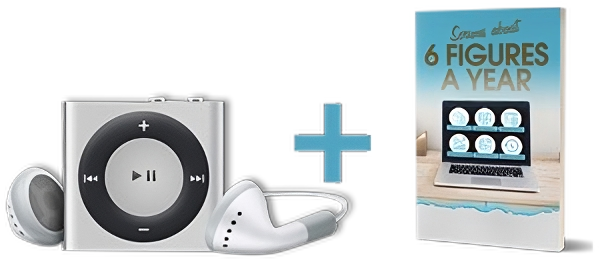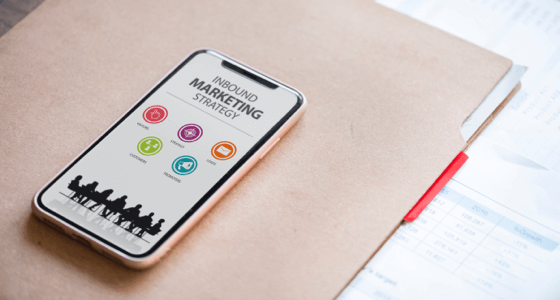How to Start a Podcast
Podcasting can give you a ton of opportunity to connect with a growing and active audience, establish tremendous rapport and build an incredibly loyal following.
But if you’ve never podcasted before… how do you even get started?
Simple: Just follow these 5 steps and you’ll have your podcast off the ground in no time.
Step 1: Choosing Your Topic and Naming Your Podcast
Get out a sheet of paper and ask yourself these two questions:
- What are you – or your business – really good at?
- What do your listeners really care about?
Of course, we’re assuming that you already know your audience for question #2. If you’ve been blogging, doing marketing, social media and so forth, you likely know what people want and what they care about.
If not, you’ll need to do some research into your market. What are their greatest fears, biggest problems and hottest desires? Find out and you’ll know what they care about the most.
Once you have a list of what you’re good at, and a second list of what your audience really cares about, see where these two lists overlap. This is the sweet spot, the content core where your strengths intersect with your audience’s interests.
This should give you the main topic for your podcast, as well as plenty of good ideas for subtopics for individual episodes.
Now that you have a topic, choose a name for your podcast.
You can use a clever name, or a name that directly incorporates your topic, or even name it after yourself.
If you’re choosing something clever, be careful that you’re not confusing people. It’s preferable that your topic still be clear to a potential listener. That said, there are plenty of clever podcast names out there that don’t give much of a clue as to content, and yet do well. “Invisibilia” is a good example. No, it’s not about how to be invisible, but rather things unseen that control behavior or shape ideas.
If you’re naming your podcast after your topic or a main keyword, then it’s pretty straight forward. For example, “How I Built This” is all about how people built companies and movements.
And if you’re naming the podcast after yourself, then you believe one of two things to be true: Either your name already somewhat well-known within your niche, or you intend that it soon will be. Either is fine. A good example is, “The Joe Rogan Experience.”
Want some help finding a good name for your podcast?
Go to https://kopywritingkourse.com/podcast-name-generator/ and fill out your topic, your name and a location.
For example, I chose Space travel, Captain Kirk and planet earth. My results included:
Captain Kirk Saves the World
Planet Earth Lab
Space Travel Happy Hour
And my favorite…
The Captain Kirk Burrito
Okay, you might need to keep looking, but the results are entertaining.
Brainstorm common keywords and phrases that your listeners might use when they talk about your topic.
Using these keywords, brainstorm names. Write it all down, no matter how silly it might seem at the moment.
Set it aside for a day. Come back and read your list with fresh eyes. Pick out your favorite names, and ask your team, list or contacts for their opinion.
Set it aside for one more day. Come back and pick one. If you’re torn between two names, choose the one that is shorter or easier to remember.
Step 2: Choose Your Podcast Format
Okay, yes, the format is audio.
But another way to look at format is how your show will be structured.
- Will it be just you talking?
- Or will you have another team member (or two) on the show with you?
- Or will you be interviewing guests?
All three of these are proven podcast formats, but odds are only one is right for you.
Let’s talk about each one:
Podcasting Solo
If you are THE expert in your niche, and you know all there is to know (or can learn all there is to know) on your topic, and you can carry a show by yourself, then this could be the right format for you.
Comediennes are awesome at doing a full 20 to 60 minutes on their own, riffing off of this topic or that.
So are some commentators.
And so are many teachers.
But keep in mind, while you might have plenty to say for the first dozen or even hundred shows, there could come a time when you run out of things to talk about.
And you might burn out fairly fast, too, if this isn’t the right format for you.
Podcasting Co-hosts
Do you have a partner you can team up with, so that you are both talking about half of the time? This way you can have witty banter in addition to your core topic.
Two to three people can work will for a discussion. More than three and you’ll confuse your listeners (remember, they can’t see you.)
Opposing opinions can work really well with this format. For example, if you have a political podcast, then having one host from the left and the other from the right can make for some fire-filled discussions.
Podcasting Interviews
This is a great format because you don’t have to be the expert – you only need to know how to ask questions.
Invite friends and influencers in the industry to be your first guests. As you gain a following, you’ll be able to invite bigger names that bring their own audience while simultaneously building yours.
That’s right – inviting guests can mean you get more listeners because of your guests’ cache with their own audience. They may even send out a message via email or social media, letting everyone know to check out their interview on your podcast.
Now that you’ve chosen between going solo, having a co-host or doing interviews, here’s something else to consider:
Do you limit each episode to one topic?
Or do you have segments in each show?
If you think of traditional TV news, they have local news, national news, local weather, local sports and national sports.
In the same way, a business podcast might have one segment on the news as it relates to the topic, a piece where the host gives a “how-to” method or an opinion on something trending, and an interview with a guest.
Step 3: Recording and Producing Your Podcast
Tools you might want to have:
- Skype, to make calls
- Ecamm Movie Tools Call Recorder, connects to Skype and records the conversation. Records a separate audio track for each speaker, making it easier to improve the audio afterwards.
- A professional microphone
- Headphones, which enable to you hear your interviewee without having your mic pick up their voice, causing an echo
- A quiet room to record the interview
- com, to find music for your podcast (if applicable)
Consider creating a professional introduction and conclusion for your podcast. You only need to have it done once, you can use it forever, and it brands your podcast in a much more professional and appealing manner.
Hire a professional voiceover artist to introduce your podcast, saying something like, “You are listening to The XYZ Podcast, bringing you ABC benefits. Visit us at XYZ.com to get your free (insert incentive you are offering).”
For the conclusion, it might say something like, “You have been listening to The XYZ Podcast. Visit our website at XYZ.com to get (whatever incentive you’re offering).”
Record Episode Specific Introductions
After each interview, immediately record an episode-specific introduction to boost your interviewee’s credibility with your listener and to introduce the topic of the episode. If you do it right away, you’ll be able to give a great intro that ties right into what was covered in the interview.
Here’s a format you might use for creating this episode-specific introduction:
Begin with an attention grabber that shows your listener how this episode will solve a problem or give them a benefit. “What if you could…”
Introduce your interviewee as the ultimate authority on this topic
Cover what’s in it for the listener. This is a great place to have a few catchy bullets in place. “In this episode of XYZ Podcast, you’re going to discover…”
Introduce yourself as the host.
Restate the name of the podcast, so that your listeners remember where they are hearing this powerful information.
Create Commercials
Just like a television show, you’re going to want to have a couple of commercials giving away exclusive content or advertising a sponsor.
If you want to build your email list, offer something valuable for free when they go to your landing page.
If you are taking sponsorships to fund your podcast, this is where you advertise their product.
If you are an affiliate for your guest, advertise your affiliate link for their product.
Here’s the format to create a middle of the broadcast ad:
Indicate the episode is NOT over. “There’s a lot more to advice to come, including how to ___.”
Give a short call to action. “If you’d like to double or even triple your traffic like our guest Bob has done, we’ll show you exactly how to do it.”
Give the link. “Just sign up at XYZ.com/traffic to get all the traffic and qualified leads your website can handle.”
Transition back to the episode. “Now let’s discover more about how to convert that website traffic into sales with the help of our expert, Bob.”
Record an Episode Specific Conclusion
Your conclusion gives you another opportunity to get your listeners to go to your website, visit your sponsor or check out an offer.
And it’s also the perfect time to thank you guest for sharing their knowledge, and to remind your audience just how valuable that advice is.
You might use the following format to do this:
- Thank your guest
- Share the URL where listeners can get more information, the free gift, the offer, or whatever call to action you’re making
- Remind listeners that you have other episode they can check out, or to subscribe to your episodes, or tell them what’s coming up in your next episode.
Step 4: Finding Your Guests, Doing Interviews
Assuming of course that your podcast will feature guests, here’s how to get them to come on your show and give them the best experience possible.
In the beginning, you might be worried that no one will want to be one of your first guests.
But if you approach existing customers, your email subscribers and industry friends, you’ll likely find enough guests to fill a dozen podcasts.
Look for people who have solved a big challenge that others would like to hear about. Hopefully they have interesting stories that will help the listener to reach their own goals.
You can even approach companies and people you buy things from. For example, if your podcast is on online marketing, and you bought a $500 course on driving traffic, ask that course creator to be on your show.
You’ll find that getting guests on a podcast can actually be a whole lot easier than finding guest bloggers. That’s because a guest blogger has to put a good deal of time and effort into making a truly great post, whereas a podcast guest doesn’t need to do very much preparation.
Plus, your podcast guests will get access to your podcast listeners. Let them make an offer, such as for a free report or video, to help them build their list from your listeners. They’ll love the exposure.
When reaching out to your possible guests, don’t send out a copy and paste email. Instead, tell them why you’ve chosen THEM, why you value the contribution they could make, and how they can personally benefit from being on your show.
Provide a link to book a conversation with you so that you can talk about the interview to come. Find out what major challenge they’ve solved recently and what they went through to accomplish their end result. This is when you get a feel for what questions to ask, and you find out what you can expect from them during the interview.
This is a great way to break the ice and get ready for the real interview.
After this conversation, write out the questions you will be asking and send it to them. Ideally you want the interview to last about 20 minutes, since the average commute to work is 25 minutes. But don’t get too hung up on length. Some interviews will be too exciting to end at 20 minutes, while others will naturally wrap up in this length of time.
When you send your interview subject the questions, ask them to book another time for the actual interview. Calendly works great for this, or there are plenty of other scheduling apps you can use.
You might send your interview subject a few suggestions, too, in order to get the best interview possible. For example:
- Find a quiet place for the interview
- Eliminate all distractions and noises
- Use headphones and a microphone
- Put all phones and notifications on silent
- Plan on 45 minutes for recording
The day before the interview, send a reminder of the interview time. if the interview is in the afternoon or evening, send a second reminder the day of the interview. People get busy and they forget.
Tell your subject what to expect during the interview. Will you record a separate introduction and conclusion after the interview? Will you ask questions not on the original list? Will you dig deeper by following up their answers with more questions?
Let them do 90% of the talking. They are the expert, so let them shine.
Thank your interviewee and let them know you appreciate them. Tell them when you expect the episode will go live. Ask for anything else you need, like their bio or headshot.
Once the episode goes live, let them know. Give them the link and any social media graphics you’ve designed, to make it easy for them to share with their audience.
Step 5: More Tips and Things to Know
Use a podcasting hosting service such as Libsyn. Then share your podcasts to iTunes, SoundCloud, Google Play and Stitcher.
Publish A Pre-Launch Podcast Announcement to Get Feedback
Once you have recorded your first three episodes, publish them to a blog post and alert your existing audience. These can be rough cuts, with the ums and ahs intact.
Ask for feedback before you spend more time on your podcast. Your goal is to product the best episodes possible, and your audience can help you do that.
Based on their feedback, either use the first three or start over. Your goal here is to know your podcast is going to be successful before you do a real launch.
Publish An Episode Zero to Explain Your Podcast
Some podcasts do this, and others don’t.
Basically, you’re recording an episode in which you tell your audience what’s in it for them. Why did you choose the name? What’s your goal? What sort of guests will you have? What will listeners learn? Think of it as an introduction to your podcast.
Record Several Episodes Prior to Your Full Launch
You’ll want to have 2 or 3 episodes published the day of your big launch, so that your first listeners have more content to consume if they want it.
And by having several episodes already recorded, you’re certain to have enough content to keep to your publishing schedule without having to scramble to get it.
You don’t want to have to rush your guests to do their interviews, nor do you want to rush yourself and end up with sloppy podcasts.
The more frequently you will publish your podcast, the more podcasts you should have built up. Someone who is only publishing one podcast per month might only have 3 or 4 recorded when they launch. But someone who is publishing 2 podcasts per week will want to have a dozen or more podcasts ready to go.
Put thought into naming each podcast episode
Ideally, you want to give a benefit along with the name of your guest (if you have guests, that is.)
For example, How to Generate 10x the Leads and Close 5x the Sales while doing 50% Less Work with Joe Smith.
Or, How to Instantly Make Friends and Win People Over at Work and Play with Joanna Jones.
Use Graphic Design to Distinguish And Define Your Branding
Brand your podcast by being consistent with all of your marketing images and graphics.
You’ll want to distinguish yourself from other podcasts on iTunes and other sites, and then create corresponding graphics for each episode.
If you’re not a graphic artist, it is well worth hiring someone to do this for you.
Blog About Each Podcast Episode
You’ll want to introduce your current blog audience to each podcast episode with a specially-published post on your blog.
This way your current readers will see that you’re offering them a new way to experience your awesome content.
For each blogpost featuring a podcast, you might want to:
- Create a feature blog graphic to show off the talent you’re bringing to your audience.
- Embed the podcast episode in the blog post. Use a player such as Podcast Motor or Smart Podcast Player to allow your readers the opportunity to listen to your episode right there on your blog.
- Include a list of bullet points – these are the take-aways from the show, and should entice your audience to listen to the podcast
- Include guest quotes that highlight your guest’s credibility and can be instantly shared on social media.
- Create quote graphics to spread the word on social media. Share these graphics with your guests so they can share them as well.
- Include your guest’s bio to showcase your guest’s knowledge and experience on of topic.
- Include or offer a transcript. Some folks will want to find a particular piece of advice, or even read the entire interview in a transcript. You can place the transcript on the page, offer a link to download the transcript, or even offer the transcript in exchange for an email address.
- Ask them to subscribe. This could be a subscription to iTunes, or your email list, or wherever you want them to subscribe to hear about and listen to more episodes.
More Ideas on What You Can Talk About on Your Show
- Interview influential guests
- Give the spotlight to your customers, clients, prospects or partners
- Talk about anything relevant and important to your listeners
- Have regular segments such as, “Tip of the Week”
- Success stories and case studies
- Product recommendations or spotlights
- FAQ’s or a Q and A with your listeners
- Stories
- Testimonials
- How to do things, teaching and instruction
- News related to your niche, and opinions on how to use that knowledge to the highest benefit
And that’s how you start a podcast! While it most definitely does take some work, it’s also completely doable.
Just to light a fire underneath you, I thought I might close with a list of podcasting benefits you may or may not have thought about before.
Benefits of Being a Podcaster:
More and more people want to listen to podcasts – you’ll be positioning yourself at the right place at the right time
You can reach an audience on the go, since people can listen to podcasts almost anywhere
You can promote products on your podcast, or sell advertising
You can use podcasting to better connect with your audience and build your loyal tribe
Podcasting helps to build your own credibility
You get to meet, talk to and even make friends with experts in your industry as you interview them
You can become a minor celebrity in general, and an actual perceived expert in your niche
You can attract new listeners, and new audience and new customers
You don’t have to be super smart or knowledgeable about your niche if you’re interviewing experts, yet because of their name recognition rubbing off on you, you will be perceived as an expert, too
You build influence and gain instant credibility
You become a better speaker and gain confidence
You can repurpose your show content into ebooks, articles, social media posts and more
People can easily share your podcasts on social media
You can connect with industry leaders who might never have taken your call or answered your email otherwise
You can create an ongoing online buzz
You can attract more publicity and even become a high profile public speaker
You can use your show for bartering leverage (promote my product and I’ll have you on my show to promote yours, for example)
People are more likely to want to do business with you when they find out you host your own show
A successful show can lead to streams of income you never even thought of before, as new opportunities become available to you
It can be the most fun and exciting part of your business
When starting a podcast, you have to be patient because you might not get any traction right away. It takes time to grow your audience.
But when you start now and stay consistent, things will pick up over time and begin to compound.
If you seek to add value and you persist, you will do well. In fact, might do amazing things that astonish even you.
Claim Your Free MP3 And PDF Training: The 3-Part Plan To Topping $100,000 Per Year In Profit
Enter your name and email address below to receive a new lesson delivered to your inbox once a week. Your first lesson will be delivered immediately.

Privacy Policy : We value your privacy. You can unsubscribe from receiving future emails with 1 click at any time.

















